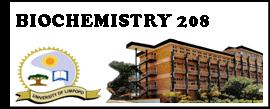
CATABOLISM AND ANABOLISM
1. Catablosim breaks down large molecules into smaller molecules whereas Anabolism joins small molecules to produces larger molecules.
2. Catabolism produces energy whereas Anabolism requires energy.

For an interactive animation of glycolysis click HERE
Glycolysis is the anaerobic catabolism of glucose.
•It occurs in virtually all cells.
•In eukaryotes, it occurs in the cytosol.
•C6H12O6 + 2NAD+ -> 2C3H4O3 + 2NADH + 2H+
•The free energy stored in 2 molecules of pyruvic acid is somewhat less than that in the original glucose molecule.
•Some of this difference is captured in 2 molecules of ATP.
The Fates of Pyruvic Acid
In YEAST
•Pyruvic acid is decarboxylated and reduced by NADH to form a molecule of carbon dioxide and one of ethanol.
•C3H4O3 + NADH + H+ → CO2 + C2H5OH + NAD+
•This accounts for the bubbles and alcohol in, for examples, beer and champagne.
•The process is called alcoholic fermentation.
•The process is energetically wasteful because so much of the free energy of glucose (some 95%) remains in the alcohol (a good fuel!).
In active MUSCLES•Pyruvic acid is reduced by NADH forming a molecule of lactic acid. •C3H4O3 + NADH + H+ → C3H6O3 + NAD+
•The process is called lactic acid fermentation.
•The process is energetically wasteful because so much free energy remains in the lactic acid molecule. (It can also be debilitating because of the drop in pH as the lactic acid produced in overworked muscles is transported out into the blood.)
In MITOCHONDRIA•Pyruvic acid is oxidized completely to form carbon dioxide and water.
•The process is called cellular respiration. Link to a discussion of cellular respiration.
•Approximately 40% of the energy in the original glucose molecule is trapped in molecules of ATP.
Test yourself:
1. The end product of Glycolysis is:
A) Pyruvate Kinase
B) Phosphoenol pyruvate
C) Glucose
D) Pyruvate
2. Glycolysis occurs in the:
A) Mitochondrion
B) Nucleus
C) Cytoplasm
D) Cell membrane
3. Catabolic processes
A) make complex molecules from simpler ones
B) break complex molecules into simpler ones
C) occur only in autotrophs
D) occur only in heterotrophs
E) none of the above
4. The proper sequence of stages in glycolysis is
A) glucose priming, cleavage and rearrangement, oxidation, ATP generation
B) cleavage and rearrangement, glucose priming, ATP generation, oxidation
C) glucose priming, oxidation, cleavage and rearrangement, ATP generation
D) ATP generation, oxidation, glucose priming, cleavage and rearrangement
E) oxidation, cleavage and rearrangement, ATP generation, glucose priming
5. What substance is regenerated by fermentation?
A) O2
B) NAD+
C) acetyl-CoA
D) ATP
E) glucose
6. The oxidation of glucose to two molecules each of pyruvate, ATP, and NADH is called ________ and occurs in the ________.
A) glycolysis; cytoplasm
B) fermentation; cytoplasm
C) the Krebs cycle; matrix of the mitochondrion
D) anaerobic respiration; cytoplasm
E) the respiratory electron transport chain; cristae of the mitochondrion
7. A cell culture was supplied with radioactively labeled O2. The cells were monitored. In a few minutes the radioactive oxygen atoms were present in which of the following compounds:
A) carbon dioxide
B) NADH and FADH2
C) water
D) ATP
E) lactic acid
8. The final electron acceptor in lactic acid fermentation is:
A) NAD+
B) pyruvate
C) O2
D) lactic acid
E) ATP
9. During the oxidation of glucose, a net gain of ATP only occurs under aerobic conditions.
A) True
B) False
10. ATP formation by glycolysis
A) occurs through aerobic respiration
B) is an extremely efficient method of acquiring energy by the cell
C) requires oxygen
D) involves substrate-level phosphorylation
E) both a and c


No comments:
Post a Comment